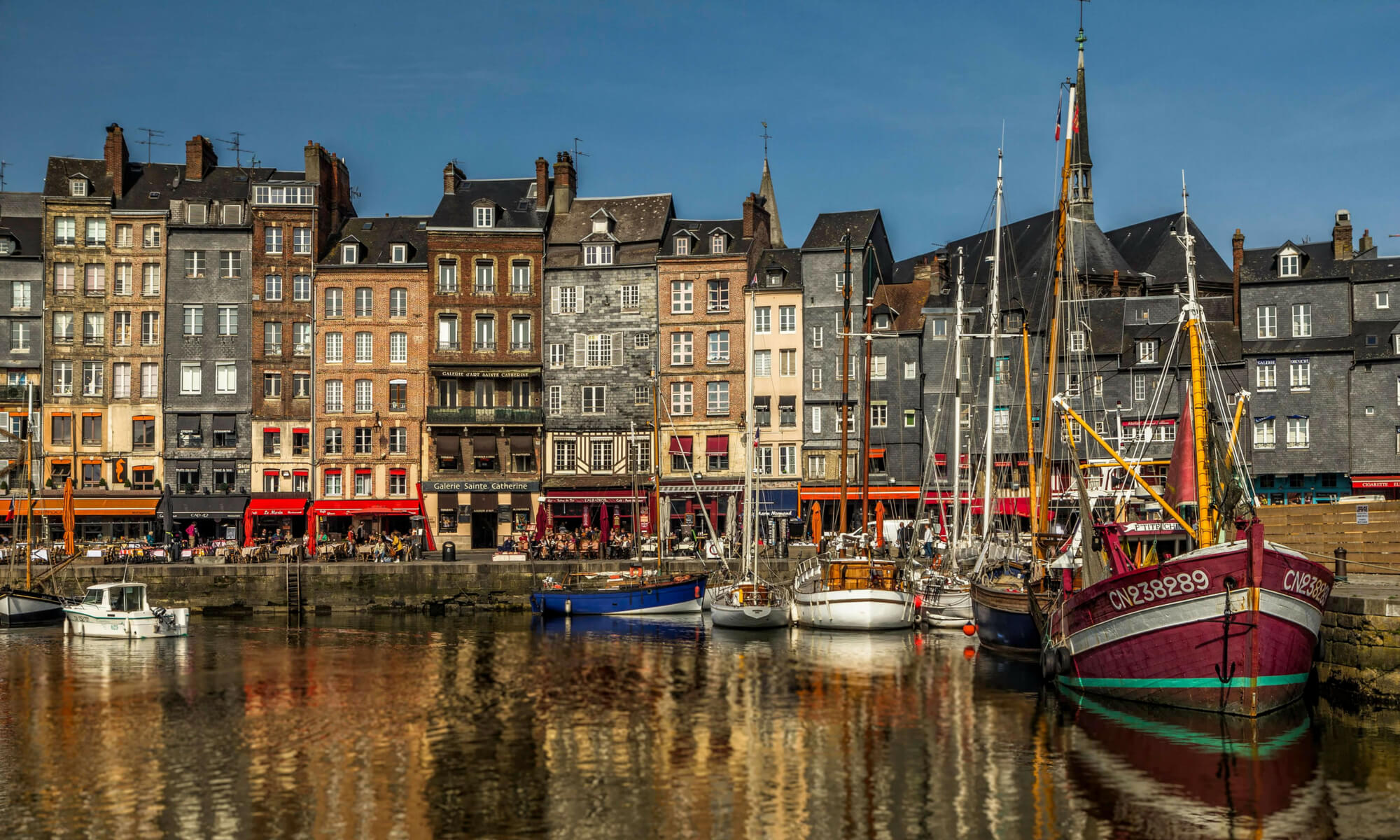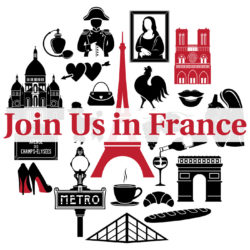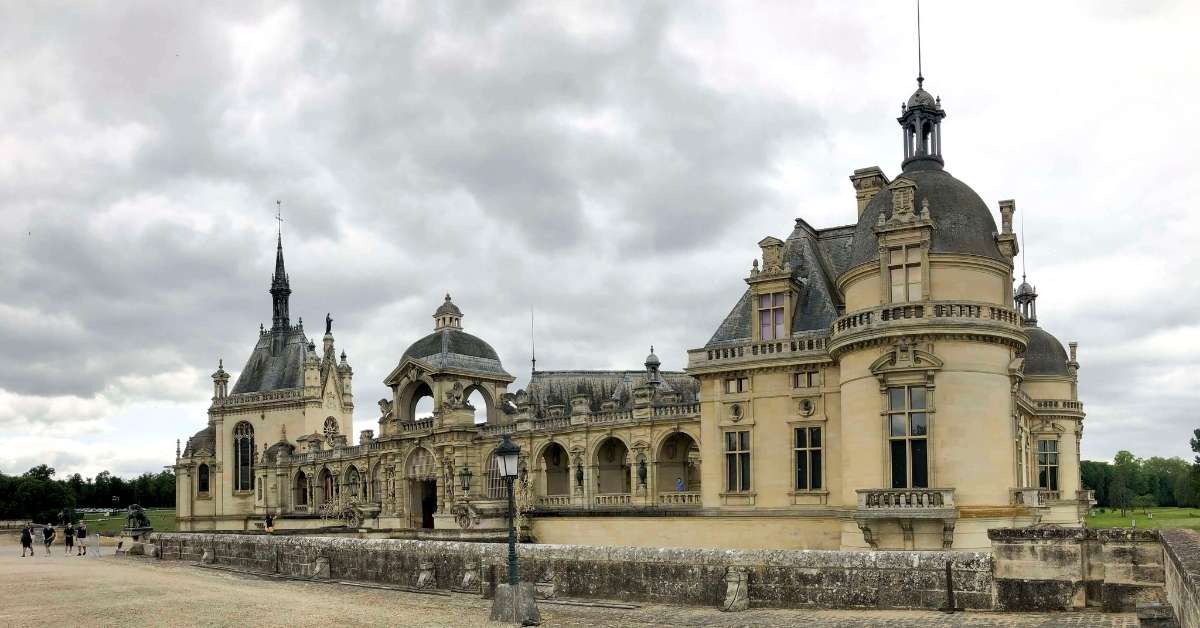Categories: Day-Trips from Paris, French Châteaux, French History
This episode features our frequent and very popular guest Elyse Rivin. If you enjoy her episodes, please consider supporting her on Patreon.
On this episode of the podcast, Annie Sargent and Elyse Rivin talk about their visit to the Chateau de Chantilly. You can visit the chateau of Chantilly on a day trip from Paris by train and have a great time in the countryside!
The Chateau de Chantilly has a long history, an amazing art collection, beautiful stables and horses, and it's a favorite for weddings and events. Click play to see why you might want to go yourself!
If you're ready to venture out of Paris and learn about French history, this episode is for you!
A Few Gotchas About the Chateau de Chantilly
- When you are looking for a ticket to Chantilly, go the "Grandes Lignes" machines. Because the train that goes to Chantilly goes all the way to Amiens, it's not a regional train but a train that changes regions.
- Don't get on the city bus that says "Chateau de Chantilly" because it will take you a long way around. There is a tourist bus that picks up visitors, but we're not sure what the schedule is. It's only about a mile on flat terrain to walk to the chateau, it's probably best to hoof it.
- Renting a bicycle would be a great way to visit. You can arrange that here or here. There are probably more, these are a couple of the first results on Google.
- There are horse shows, but it looks like the shows are only in the evening.
- This is a great place to bring a picnic and there is a bathroom in the horse museum.
How to Get to the Chateau de Chantilly
Chantilly is both a town and a chateau situated 55 km north of Paris in the Oise Department. It can be reached by car on the autoroute (about 1 h of driving) or by train. The TER, local regional train goes there very frequently (about once an hour) and takes only 25 mn. Once in Chantilly you can take the shuttle, or the town bus or walk (about a mile).
The town has some nice restaurants and a few hotels and bnb’s but it is an easy day trip from Paris.
Chantilly, the Chateau and Park
The chateau of Chantilly is famous: it is one of the few royal domains that is still a private, part of the heritage of the Condé-Bourbon family, rich descendants of the king Henry IV’s brother.
Famous for the beauty of its park with 115 hectares, its forest with 60 hectares and for the chateau which has become an important art museum with a rare collection, and for the stables and the horse shows, people come from all over to visit it.
What most people don’t realize is that the chateau that we can see now, with its medieval turrets and spires and carved windows, and moat, is not the original, but a reconstruction done in the 19th century, built on the ruins of the original chateau.
The vast park which seems enormous, is in fact only a half of the original land that belonged to the royal family, and the famous horse stables are an addition from the late 18th century.
History of the Chateau de Chantilly
In the beginning, in the early Middle Ages, there was an ancient fortified castle with a moat where the chateau now sits. This castle had 7 towers and was the property of the local lord who reigned over the vast forests in the area. In 1358 the primitive castle was razed and a new ‘modern” castle was built.
By this time the lands and the buildings had been given over to the Montmorency family, one of the richest and most powerful of the noble families with a lineage dating back to the time of Charlemagne.
In 1484, in what was now the Renaissance, the property was left to the Duke of Montmorency’s nephew, Guillaume, who turned the castle into a Renaissance palace and recuperated a lot of land to make an enormous park. This powerful family was filled with military leaders and counselors to various kings.
One of them, Anne de Montmorency (yes, it’s a man!) became Connetable (head of the king’s army and head counselor). He expanded the chateau, adding 7 chapels, and a separate pavillon in the park.
Conversions and Religious Strife
It happened that the Montmorency family became part of the royal family that converted to the “new” religion of Protestantism, and, during the 1500’s took part in the war of religion defending the Protestants.
In 1632, after the assassination of Henry IV, when the Catholics under Louis XIII took control and repressed the Protestants, the last Duke of Montmorency made the fatal mistake of siding with the kings’s brother in an attempted coup. Captured by Louis XIII and his army, the king, tired of all the rebellions, decided to make an “example’ of him, and had him executed.
All the lands that belonged to the Montmorency family were confiscated, but soon given back to the family, except the Chateau de Chantilly. However, in 1643, after the king’s death, his widow gave Chantilly back to the last surviving member of the Montmorency family, the duke’s sister, Charlotte.
The Bourbon-Condé Family
It so happened that she was married to another royal, the prince Henry de Bourbon-Condé, a loyal member of the royal family. And that is when Chantilly became part of the property of the Bourbon-Condé, one of the richest families in France.
Le Grand Condé and Le Nôtre Gardens
Charlotte de Montmorency’s son, called “The Great Condé”, a military hero, decided, after years of battles and war, to retire to his estate of Chantilly, and asked the gardener-architect Le Nôtre, (who would do the vast gardens and park of Versailles afterwards) to design a park and garden for Chantilly. Le Nôtre made an enormous French garden and created the Grand Canal, a waterway that is still part of the estate.
A Feast of Reconciliation Featuring Molière and a Suicide
A man of culture, and a great hero, he had been in a dispute with his cousin, Louis XIV. To reconcile with him, he planned an enormous feast and banquet that was to last for 3 days. Molière with his troupe was invited to perform.
The banquet was a great success and the Prince de Condé reconciled with the king, but there was a terrible scandal that almost ruined the reconciliation! The head chef, a man named Vatel, (called the Master of the Mouth).
Vatel thought that his reputation would be tarnished if he failed to have the greatest food ever served, committed suicide on the third day because an order of fresh fish for the big meal had not arrive. But, in spite of this, the festivities went on, and the Prince Condé just added to his reputation as a great cultured person.
The Chateau de Chantilly During the French Revolution
In the 1700’s the chateau was again “modernized” and another small guest house, called the Chateau d’Enghien, was added in 1772. All this time the property was in the hands of the Bourbon-Condé family.
In 1789, as the Revolution began, one day after the taking of the Bastille, the Prince Condé left France for England. He stayed in exile with his family until 1814, and came back to take Chantilly.
Building Les Grandes Ecuries
It was also in the 1700’s that the stables were built. Starting in 1719 and expanded through to 1740 the Grandes Ecuries as they are called, measures 186 m long and could hold up to 250 horses and 500 hunting dogs.
The prince was so proud of these stables that have a large central dome, and many courtyards for exercising the horses, that he invited the king and other royalty to have meals in the central domed part.
During the Revolution Chantilly had been made into a political prison. Most of the chateau was destroyed, pillaged, robbed and desecrated. More than half of the vast park was sold off in little parcels and the gardens were abandoned. Strangely, the stables and the little chateau of Enghien were not destroyed or damaged.
The Bourbon-Condé Family and the Duc d'Aumale
In 1814 the Prince Bourbon-Condé returned to Chantilly after 25 years of exile. His was a widower with no surviving children, and so at his death, in 1830, the property (what was left of it) went to his grand-nephew, Henri d’Orleans Duc d’Aumale.
And it is the Duke d’Aumale, member of the Orleans family, the last to lay claim to the throne of France, who undertook the reconstruction of the chateau. He was responsible for giving the chateau and the grounds back some of its ancient splendor. And it is he who made the fabulous museum that the Chateau of Chantilly has become.
When he returned to France he decided to have the chateau rebuilt, using as much of the ancient stone as possible and recreating the chateau in almost its exact form as before. That is why when you look at it, it seems to be a true Renaissance chateau. The moat and one small wing of the building are the only original parts of the chateau still left.
Collecting Rare Books and Art
The Duke d’Aumale had also spent many years in exile in England as the 19th century was filled with many upheavals, revolutions and changes of regime. He spent the years from 1848 to 1870 in England where he began his passion for the collecting of rare book.
Like his ancestor, the Duke d’Aumale was a great collector and a man passionate about books. He had spent years of his life learning about and collecting rare old manuscripts and ancient books, as well as artwork, particularly of the Renaissance.
As he had the chateau of Chantilly rebuilt, he decided that he would use it for his enormous collection of art and books. When he died, in 1897, his will stipulated that the entire chateau be turned into a museum and was given as a “gift” to the Institute of France.
The Chateau de Chantilly Becomes a Museum
He stipulated that it be “no longer a home, but a museum, a place of work and research, for all who are interested in my collections, my library, my archives”. He also stipulated that nothing be changed, that is, the placement of all the works, be kept as it was at his death. He hoped for a place where all who came could take advantage of his collections.
So even though technically the domain of Chantilly is still part of the vast holdings of the Orleans family (the family that still claims the right to the throne of France) the chateau is managed and controlled by the public institution the Institute of France.
Tips for Your Visit to the Chateau de Chantilly
Firstly, upon arriving it is easy to be impressed by the size of the huge park with the canal and moat still surrounding the Chateau that can be seen in the distance. With its many spires and sections the chateau is imposing.
Once inside the Chateau, which is entered via a courtyard with the chapel to one side, you find yourself inside a vast art museum. There are a few of the private rooms that show the furnishings of the last Duke, and there is a magnificent marble staircase that goes to an off limits, private part of the chateau, but for the rest it is a museum, just as the last duke wanted
An Amazing Art Collection
This museum is famous for several things: its collection of paintings, including three paintings by Raphael, the Renaissance genius (there are only two other museums in the world that have three Raphaels), Rembrandt, Flemish masters, French masters, among others.
There is an enormous, extremely rare collection of sepia tinted stained glass windows dating from the Renaissance that have mythology and poetry as themes, and finally, perhaps most impressive of all, is the library.
The library, which was the pride and joy of the duke, displays the collection of rare books, (thousands of which have now been taken to the National Library in Paris) including several medieval codex (books made before printing).
Among these rare books are a collection of Books of Hours, the medieval prayer books that aristocrats had made for themselves or gave as gifts to their betrothed. The most precious and famous of these is called The Book of Hours of the Duke of Berry.
There are several pages on display at any given time, and they show skill of the artists who made the elaborate illuminations, in gold leaf and bright colors that were used to illustrate the texts. This library is one of the most important in France for its collection.
Don't Miss the Stables!
Across the park, on a small hill, are the famous Ecuries (Stables) of Chantilly. The visit to the stables takes you inside to see some of the horses that are housed there. From the stables there is access to the Museum of Horses, a small, delightful museum that shows the history from ancient times through to the present, of man’s relationship to the horse.
The collection includes some rare items from ancient Rome, from the Steppes and from Arabia. There are good explanations of the pieces on display and it is not too big a museum to go through which makes it easy to do with children.
If there is a performance scheduled, you can see one of the famous horse shows that have been put on in Chantilly since 1982. The shows are often held under the famous dome in the center of the stables, which were renovated in 2013.
Take a Stroll in the Park
And finally, there is the park itself. You can walk through a good part of it with a small map given at the ticket office, or you can rent a golf cart (there are many kilometers of park and trails) or you can take the train that makes several stops and that leaves about every 45 minutes.
In the park there are several stops with small pavilions, there is a tiny menagerie with kangaroos and peacocks that have been there since the 19th century. You can rent a tiny boat to go out on the canal as well.
Given that the domain is huge, it is impossible to see or visit all of it, but you can see enough to get an idea of its size and splendor. Remember, this huge park preceded the park of Versailles!!!
It is possible to picnic in the park and just walk around the grounds without paying any fee.
Conclusion
This is a wonderful excursion outside of Paris! We recommend you spend the whole day there. If going with children, emphasize the visit to the park, stables and bring a picnic. We didn't see any catering trucks when we went, but it's possible there are some in non-pandemic times.
Art and book lovers will enjoy seeing some of the best collections anywhere in the world. This museum is starting to feel like a bit of a dusty old place. We hope they bring cutting edge "museologie" to this amazing collection soon. I can't find a word for "museologie" in English, it means the study of how to best display items in a museum. Better lighting would do it a world of good in our opinion.
The Chateau de Chantilly is a favorite for wedding photographers because you can't beat that background! You may want to try your own family selfies with this glorious Renaissance Chateau in the background.
More episodes about French Chateaux
FOLLOW US ON:
Subscribe to the Podcast
Apple YouTube Spotify RSSSupport the Show
Tip Your Guides Extras Patreon Audio ToursCategories: Day-Trips from Paris, French Châteaux, French History



